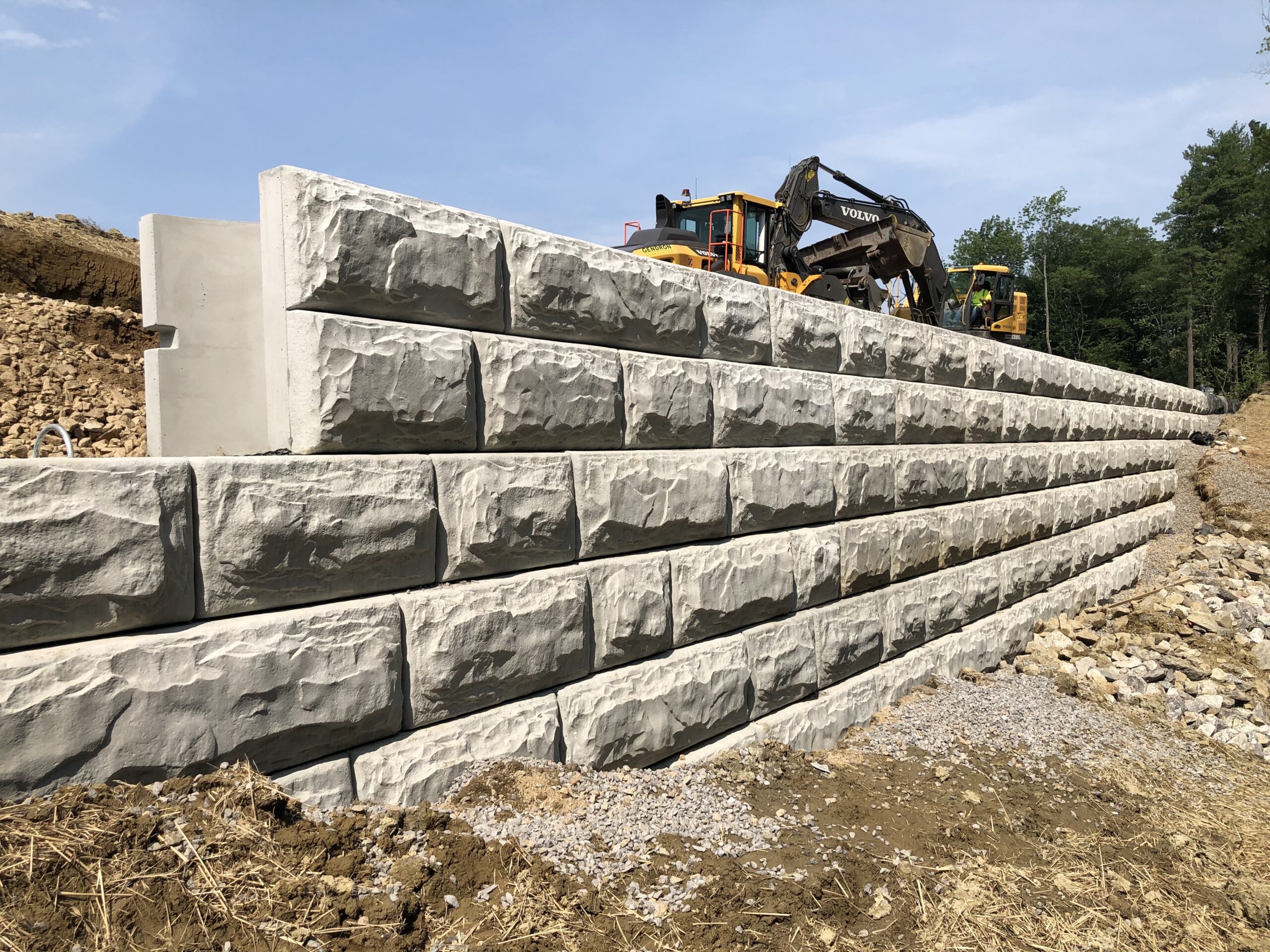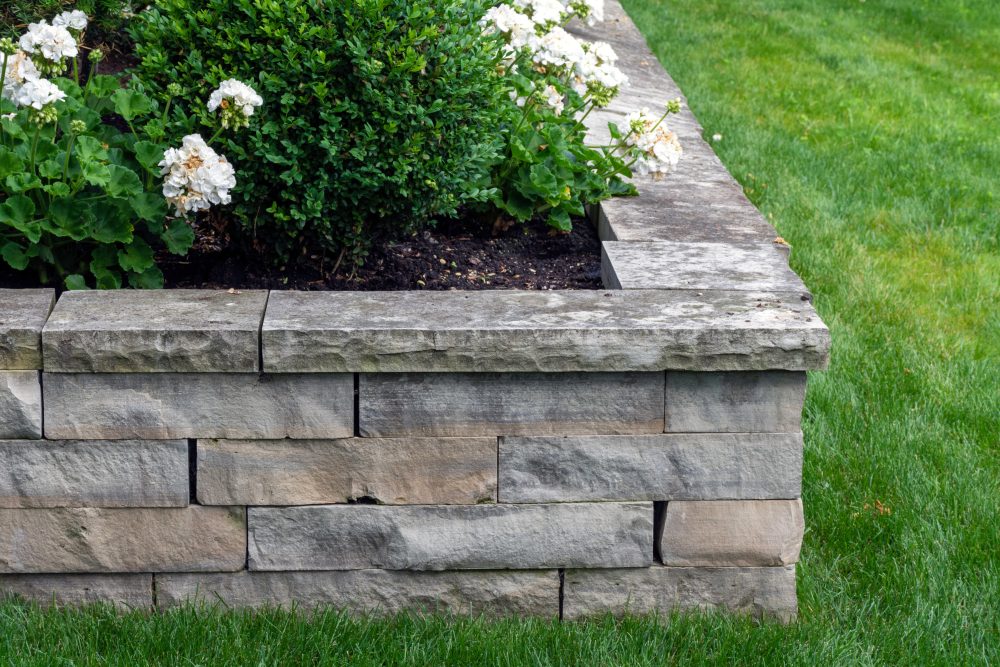Trick Factors To Consider for Building Effective Retaining Walls in Your Backyard
When you're taking into consideration constructing a preserving wall surface in your yard, it's vital to consider a number of essential elements. The wall surface's function, the materials you'll make use of, and the certain soil problems can all influence its efficiency and longevity. You'll additionally need to browse regional building codes and prepare for appropriate drainage. How do you assure your design not just meets these demands but additionally improves your landscape? Allow's discover the important steps together.
Comprehending the Function of Your Retaining Wall
When you think of building a keeping wall surface, consider its main function: maintaining soil and avoiding disintegration. Retaining walls give necessary support for sloped landscapes, aiding to maintain soil stability. You'll discover they're essential in locations where water overflow could otherwise wash away soil, resulting in pricey fixings and landscape damage.
By keeping back earth, these walls create level surfaces for gardens, outdoor patios, or paths. This not only improves your lawn's visual appeals however likewise promotes much better drain, reducing water pooling in unwanted areas. If you're handling steep slopes, a well-constructed retaining wall can stop landslides, making certain safety and security for you and your home.
Eventually, comprehending the function of your retaining wall will assist your style decisions and help you create a functional, durable framework that meets your needs. Take a minute to assess your landscape; it'll pay off in the lengthy run.
Selecting the Right Products
When selecting materials for your retaining wall, you'll desire to take into account sturdiness, aesthetics, and price. Each variable plays a necessary role in guaranteeing your wall stands the examination of time while looking fantastic and suitable your budget plan. Let's explore just how to make the very best choices for your task.
Product Durability Aspects
Picking the right products is important for the longevity and performance of your retaining wall surface, because their durability straight impacts the wall surface's ability to hold up against environmental stresses. Beginning by considering your local environment; materials like concrete and rock stand up to moisture and temperature level changes well. If you stay in an area vulnerable to heavy rainfalls, select products with great water drainage properties, like gravel or porous blocks, to stop water build-up.
Some products perform better in certain dirt kinds, so it's important to match them accordingly. Picking durable materials assurances your retaining wall stands strong, securing your backyard for years to come.
Visual Design Choices
Long lasting materials not just ensure your retaining wall's structural integrity yet likewise play a key duty in its visual appeal. Don't fail to remember about the wall surface's shape-- bent walls can produce a softer look, while straight lines can feel more organized. By very carefully selecting products that align with your visual vision, you'll enhance your exterior area while ensuring your wall surface stands strong versus the aspects.
Cost-Effectiveness Evaluation
Picking the best materials for your retaining wall isn't just concerning aesthetics; it's likewise vital for your spending plan. When selecting products, think about both ahead of time costs and lasting sturdiness.
Don't fail to remember to aspect in upkeep prices. Some materials, like all-natural rock, can include appeal and call for much less maintenance, while others could require normal therapies
Inevitably, consider the pros and cons of each option versus your spending plan and the wall surface's desired purpose. Spending carefully in products now can avoid pricey concerns in the future. Pick products that stabilize expense and performance efficiently.
Assessing Soil Conditions and Drainage
As you start your job, evaluating dirt conditions and drainage is crucial for the success of your retaining wall surface. Sandy soil drains well yet lacks security, while clay dirt can maintain wetness, leading to press on your wall surface.
Following, assess the slope of your lawn. If water normally flows toward your wall surface, you'll require to apply a drainage service to stop disintegration and stress accumulation. Consider mounting perforated pipelines or crushed rock backfill behind the wall to help with drainage.
Last but not least, observe any kind of close-by trees or vegetation; their origins can impact dirt stability. By comprehending your dirt conditions and applying correct water drainage, you'll create a strong structure for your retaining wall that stands the examination of time.
Adhering To Local Building Codes
Prior to you begin building your retaining wall surface, you require to study local guidelines to ensure conformity. It's vital to comprehend what allows you must acquire, as this can conserve you from pricey fines or needing to remodel your job. Taking these steps seriously will assist you develop a secure and reliable structure.
Study Local Regulations
Comprehending local guidelines is important when intending your retaining wall job, particularly given that building codes can differ greatly by location. Look for guidelines on wall elevation, materials, drainage systems, and architectural stability. By doing your research upfront, you can ensure your retaining wall surface meets all needed codes and blends seamlessly right into your see this website backyard.
Acquire Necessary Licenses
Once you have actually investigated neighborhood policies, the following step is to acquire the essential permits for your retaining wall surface task. This process assurances your wall surface follows building ordinance and safety requirements. Connect to your neighborhood building authority to discover what allows you require. They may need details strategies or engineering evaluations, specifically for bigger walls. Be prepared to submit in-depth illustrations, including dimensions and products. Do not neglect to check if your project influences drainage or neighboring residential or commercial properties, as these aspects could call for added permits. Securing the best approvals can conserve you from expensive penalties or needing to dismantle your wall surface later on. Bear in mind, following the guidelines now will cause a smoother building and construction experience.

Planning the Layout and Appearance
As you commence planning the style and aesthetics of your retaining wall, consider how it will integrate with the bordering landscape. Consider the products you'll make use of-- rock, block, or concrete-- and how they'll complement your home's architecture and the natural environments in your yard. Choose shades and appearances that blend seamlessly with existing attributes like patio areas, pathways, or yards.
Next, picture the wall surface's form and elevation. Curved walls can soften an inflexible landscape, while straight lines may share a more modern-day look. Do not forget to include plants and greenery around the wall surface for a natural touch; this can enhance its charm and incorporate it into the setting.
Lastly, bear in mind functionality. Your layout ought to not just be visually pleasing yet also serve its objective efficiently. By attentively planning these aspects, you'll create a preserving wall that boosts your yard's elegance while meeting its architectural role.
Determining Elevation and Thickness Demands
To construct a sturdy retaining wall, you require to precisely determine its elevation and density needs based on the soil conditions and the elevation of the incline it will certainly support. Begin by evaluating the slope's angle and the type of dirt, as various dirts apply varying amounts of pressure.
For walls over four feet high, take into consideration a density of at the very least 12 inches. If the wall is taller, enhance the thickness proportionally to preserve security.
Next, calculate the height of the wall by measuring the vertical distance it needs to keep. For each foot of elevation, you need to usually prepare for a density of one-third of the wall surface's elevation.
Constantly keep in mind to account for additional variables like water drainage and backfill, which can affect your wall's style. Appropriate estimations now guarantee your retaining wall stands solid and lasts for several years ahead.
Upkeep and Durability Considerations
While keeping your retaining wall surface might appear like a reduced top priority, neglecting it can result in significant issues in time. Regular evaluations are vital; look for fractures, bulges, or any signs of water damages. Attending to these issues early can save you from pricey fixings down the roadway.
Watch on drain systems, as well. Clogged drains can create water to accumulate, exerting stress on your wall surface and compromising its security. Clear particles and guarantee correct flow to maintain longevity.
You might likewise desire to review sealing your wall surface to safeguard it from my website moisture and weathering. Relying on the product, this might call for reapplication every few years.
Lastly, landscape design around your wall can sustain its integrity. Prevent planting huge trees nearby, as their roots can threaten the structure. With positive upkeep, your retaining wall can offer you well for many years to come.

Regularly Asked Questions
Can I Develop a Retaining Wall by Myself, or Should I Work with an Expert?
You can most definitely construct a retaining wall on your own if you have the right tools and understanding. Working with a professional guarantees it's done properly, specifically for next page larger or even more intricate structures. Consider your skill level before determining.
What Are one of the most Common Errors Made When Structure Retaining Walls?
When constructing retaining walls, you might neglect appropriate drain, avoid making use of the appropriate products, or neglect support. These common errors can bring about architectural failing, so take your time and strategy carefully to avoid issues.
Just how Do I Know if My Retaining Wall Needs Support?
You'll understand your retaining wall requires support if you see cracks, leaning, or protruding. Check for water pooling behind it or soil erosion near the base. Address these indicators immediately to avoid additional damage.
What Plants Appropriate for Landscaping Around a Retaining Wall?
When landscaping around a retaining wall, think about using low-maintenance plants like succulents, ornamental grasses, or creeping ground covers - OKC Precision Retaining Walls. They'll prosper in those conditions and include charm while preventing soil disintegration around your wall
Just How Can I Protect Against Disintegration Around My Retaining Wall?
To avoid erosion around your retaining wall surface, you can grow ground cover, usage compost, and mount drain systems. Frequently check for water build-up and change landscaping to reroute runoff away from the wall.